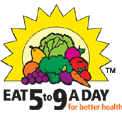Home | FOOD ARTICLES | Food Trivia | Today_in_Food_History | Food_History_Timeline | Recipes | Cooking_Tips | Food_Videos | Food_Quotes | Who’s_Who | Culinary_Schools_&_Tours | Food_Trivia_Quizzes | Food_Poems | Free_Magazines | Food_Festivals_and_Events
Food Articles, News & Features Section
FREE Magazines
and other Publications
Free Professional and Technical Research, White Papers, Case Studies, Magazines, and eBooks
DRIED FRUIT
Drying is the oldest method of preserving food. The first European settlers in America often ate dried corn, apple, currants, grapes and meat. Sun drying of food was an easy way to prolong the life of food, but this form of dried food was different from what is available today. In different climates, the food dried differently because complete sun drying is dependent on very particular weather conditions. Drying eliminates moisture from the food resulting in a longer food life. Organisms that make food spoil require moisture to survive, so foods that have been completely dried have the longest life.
The methods of drying food, particularly fruits and vegetables, have become more sophisticated over time. The three most common methods used today are briefly described below:
-Solar: Solar dehydration of food requires 3 to 5 consecutive days of 95 degrees or above and low humidity. This climate is found only in limited areas in the United States.
-Oven: Foods are dried using a household kitchen oven. This method can be expensive as many hours are normally required to dry food. Oven dried foods are often times darker and more brittle than foods dried by other methods. This method is often suggested for first time dryers, as very little new equipment is required for this method.

-Dehydrator: This type of drying produces the highest quality product. An electric dehydrator may be purchased and various sizes and levels of quality are generally available.
Dried fruits and vegetables are high in fiber and carbohydrates and low in fat. However, dried foods are more calorically dense than their fresh counterparts. The recommended serving size for dried fruits and vegetables is half that of fresh.
Vitamin C is one nutrient that is destroyed by heat. Pretreating food with citrus juice can help increase the vitamin C content of the dried food.
SELECTION
For drying at home, select ripe fruits and vegetables for drying. Bruised fruit may be used if those areas are removed before drying. Do not use any food with mold on it for drying. Peel and slice food into 1/8 to 1/2 inch slices. The higher the water content, the larger the slice should be because the more it will shrink in drying.
Pretreating food before drying is a common practice, but not required. Dipping fruits into citrus juices (orange, lemon, or pineapple) helps avoid color changes. Vegetables are best dipped in diluted lemon juice before drying (1/4 cup lemon juice to 2 cups water).
Blanching is also recommended for certain vegetables (asparagus, green beans, broccoli, brussles sprouts, cauliflower, and peas). Blanch vegetables in boiling water for 1 to 3 minutes, or until the skin cracks.

If you choose to purchase dried fruit at the supermarket, you will generally find a good selection of the most popular fruits. A larger selection of items, especially dried vegetables, are often found at natural food stores. Most dried fruit is sold pre-packaged and may be found in either the fresh produce or canned food departments.
Dried fruits and vegetables are also sometimes available in the bulk foods section. Do not purchase any dried food with mold or an abnormal smell.
STORAGE
Whether dried at home or purchased, dried fruits and vegetables should be kept in an airtight container. Refrigeration is not necessary, but some people prefer the taste of cold dried food. Dried fruit may be frozen, but this sometimes affects the texture and taste of the food.
Shelf life varies from product to product, but most items will keep, if stored properly, for a minimum of one month. Some items, such as raisins, have a significantly longer shelf life of approximately a year or more.
PREPARATION
Generally, once a fruit or vegetable is dried, there is no additional preparation before using. Many recipes require the fruit or vegetable be sliced or diced, which is often easier when the item has been refrigerated overnight. Dried fruit and vegetables are commonly used in bread, desserts, granola, or as a topping.
FAVORITES
These are the most practical and common items to dry:
-Fruit: Ripe apples, berries, cherries, peaches, apricots and pears
-Vegetables: Peas, corn, peppers, tomatoes, onions, potatoes and green beans
Make Dried Fruit Part of Your 5 A Day Plan
-Add dried cranberries to a rice dish to add flavor and color.
-Sprinkle raisins and dried berries into your morning cereal.
-Sun dried tomatoes add texture and flavor to pasta and rice dishes.
-Dried apricots work great in muffins and breads.
- Dried cherries add color and nutrients to granola or trail mix.
RELATED ARTICLES
Please feel free to link to any pages of FoodReference.com from your website.
For permission to use any of this content please E-mail: james@foodreference.com
All contents are copyright © 1990 - 2025 James T. Ehler and www.FoodReference.com unless otherwise noted. All rights reserved.
You may copy and use portions of this website for non-commercial, personal use only.
Any other use of these materials without prior written authorization is not very nice and violates the copyright.
Please take the time to request permission.


